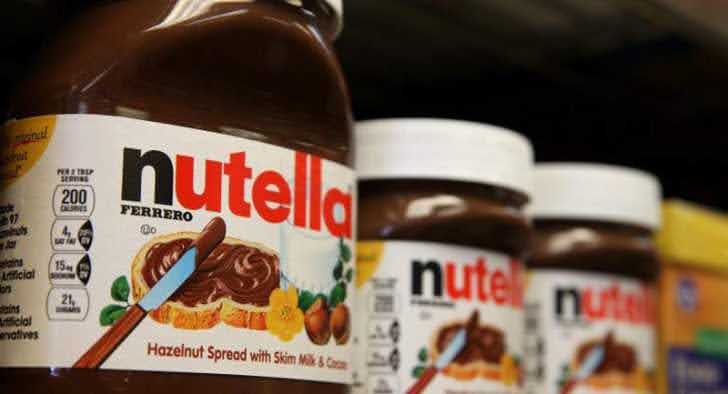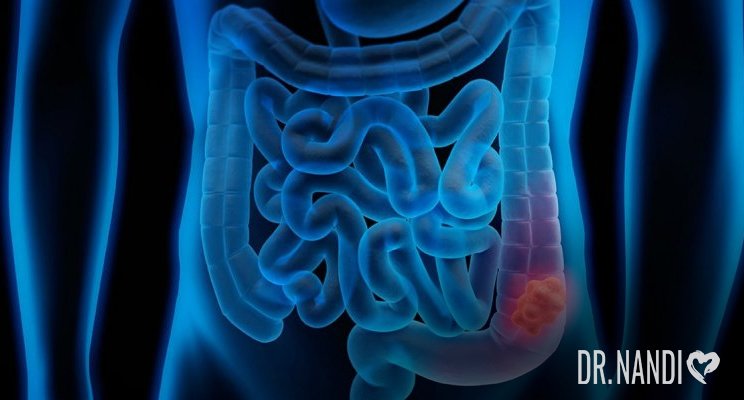Nutella, the globally beloved hazelnut spread, has recently found itself at the center of a health controversy. Reports linking its key ingredient, palm oil, to potential cancer risks have sparked a widespread reaction, with stores around the world beginning to pull the product from their shelves. This concern originates from a 2016 study by the European Food Safety Authority (EFSA), which pointed out that palm oil can form carcinogenic substances when subjected to high temperatures.
The revelation has caused both alarm and confusion among consumers, as Nutella is a staple in many households. Despite the popularity of the spread, the implications of these findings are not widely understood. As this situation unfolds, it’s crucial to unpack the details of the EFSA report, understand the industrial processes involved in making Nutella, and assess the actual risks posed to consumers.
The Palm Oil Controversy: Unveiling Nutella Risks
The recent uproar over Nutella began with a specific focus on one of its primary ingredients: palm oil.
Palm oil is favored by many food manufacturers for its cost-effectiveness and ability to extend the shelf life of products. However, its safety has been questioned following a report by the European Food Safety Authority (EFSA) in May 2016, which claimed that palm oil is potentially more carcinogenic than other vegetable oils when heated above certain temperatures. According to the EFSA, the main concern lies in the formation of Glycidyl fatty acid esters, substances that are recognized as carcinogens.
Ferrero, the manufacturer of Nutella, has responded to these claims by ensuring that their production processes do not heat palm oil to the critical temperatures cited in the EFSA report. They argue that their method of processing palm oil remains well below the threshold that might produce harmful substances, thereby maintaining the safety of their product. Despite these assurances, the report has led to significant consumer backlash and a reconsideration of Nutella on the shelves of several supermarket chains, particularly in Europe.
This controversy highlights a broader issue within the food industry: the balance between cost efficiency and health safety. As more information comes to light about the potential health impacts of commonly used ingredients like palm oil, both consumers and manufacturers are forced to reassess their choices and practices.
Does Nutella Cause Cancer? The Scientific Findings
The question stems from concerns about the carcinogenic potential of heated palm oil, a key ingredient in Nutella. The EFSA’s 2016 report indicated that palm oil can develop potentially harmful substances, known as Glycidyl fatty acid esters, when heated above 200°C.
These substances have been identified in lab tests as carcinogens, which raises significant concerns about long-term health effects. However, it is crucial to note that the temperatures referenced in the EFSA report are typically higher than those used in food processing, including the production of Nutella.
Nutella’s manufacturer, Ferrero, has openly addressed these concerns, stating that their processing temperatures never reach the levels that would cause the formation of these carcinogenic esters. They emphasize that their production method involves controlled temperatures to ensure the safety and quality of the final product.
Is Nutella Bad for Kids? Examining Nutritional Concerns
While Nutella has defended its use of palm oil, there are other nutritional factors that may make this popular spread less ideal for young children. Here’s a look at its ingredients beyond palm oil.
- High Sugar Content: One of the primary concerns about Nutella is its high sugar content. A typical serving (2 tbsp.) contains 31 grams of sugar, and this high sugar content can contribute to various health issues in children, including tooth decay, obesity, and an increased risk of diabetes. The American Heart Association recommends limiting the amount of added sugars in children’s diets to improve their overall heart health.
- Saturated Fats: Though Nutella contains some natural fats from hazelnuts, it also includes saturated fats from palm oil. High intakes of saturated fat can raise levels of “bad” LDL cholesterol, potentially increasing heart disease risk later in life. The American Academy of Pediatrics suggests that children’s diets should focus on fruits, vegetables, lean proteins, and whole grains rather than foods high in saturated fats.
- Artificial Additives: Nutella also contains additives like soy lecithin and vanillin. While these are common in many processed foods, there is growing concern among parents about the potential health impacts of artificial ingredients, particularly regarding allergies and sensitivities in children.
- Nutritional Value: While Nutella contains some nutrients like calcium and iron, the amounts are minimal compared to its sugar and fat content. For a healthier breakfast or snack, options that provide more substantial nutritional benefits, such as nut butters with no added sugars or salts, might be preferable.
- Caloric Density: Nutella is calorically dense, meaning it provides a high number of calories in a small portion – approximately 200 calories per serving. This can contribute to excessive calorie intake, especially if not measured and moderated, potentially leading to weight gain.
For parents concerned about nutrition, considering these factors is crucial. While Nutella can be enjoyed in moderation, relying on it as a regular part of a child’s diet might not align with the goals of promoting long-term health and good eating habits. Encouraging a diet rich in whole, unprocessed foods can offer more benefits and contribute to healthier eating patterns as children grow.
Healthier Alternatives to Nutella for Kids
For parents looking to satisfy their children’s cravings for something sweet and chocolatey without the high sugar and fat content of Nutella, there are several healthier alternatives available. These options can provide similar flavors and textures but with better nutritional profiles, making them more suitable for regular consumption:
- Almond Butter with Cocoa: Mixing almond butter with a touch of cocoa powder and a natural sweetener like honey or maple syrup can create a delicious spread that’s lower in sugar and higher in protein and fiber.
- Homemade Hazelnut Spread: By blending roasted hazelnuts, cocoa powder, a dash of vanilla extract, and a sweetener like dates or agave, you can make your own chocolate-hazelnut spread. This allows full control over the ingredients, ensuring there are no artificial additives or excessive sugars.
- Avocado Chocolate Spread: For a creamy texture and a boost of healthy fats, blend ripe avocado with cocoa powder and a natural sweetener. This spread is rich in nutrients like potassium and vitamin E, which are essential for children’s growth.
- Sunflower Seed Chocolate Spread: This is a great nut-free alternative that can be enjoyed by children with nut allergies. Sunflower seeds provide magnesium, vitamin E, and protein, making this spread both nutritious and delicious when blended with cocoa powder and sweetened to taste.
- Low-Sugar, Higher-Protein Chocolate Spreads: Some commercial brands offer chocolate spreads that are specifically formulated to be lower in sugar and higher in protein. Look for options that use natural sweeteners and provide additional nutrients like protein powder for a healthier profile.
- Pureed Berry Spread with Cocoa: Blend berries like strawberries or raspberries with a bit of cocoa powder for a naturally sweet and antioxidant-rich spread. This not only cuts down on sugar but also increases the intake of vitamins and fiber.
- Greek Yogurt Chocolate Spread: Mix Greek yogurt with cocoa powder and a natural sweetener for a tangy, creamy spread. This version will also add a good amount of protein and probiotics to your child’s snack.
My Personal RX: Making Healthy Eating More Fun for the Family
Encouraging children to adopt healthy eating habits can be challenging, but transforming it into a fun and engaging experience can greatly enhance their interest and participation. As a doctor, I often suggest to parents that involving kids in the process and creatively presenting healthy options can make a substantial difference. It’s not just about the foods they eat—it’s also about cultivating positive attitudes toward nutrition.
- Get Creative with Food Presentation: Use cookie cutters to make fun shapes out of fruits, vegetables, and whole-grain sandwiches. Bright colors and creative presentations can make healthy foods more visually appealing to children.
- Involve Them in Cooking: Bring kids into the kitchen to help with meal preparation. Simple tasks like rinsing veggies, stirring batter, or assembling their own plates can make them more interested in the foods they eat.
- Introduce Omega-3 Fish Oil: As parents, it’s crucial to lead by example. Incorporating Omega-3 Fish Oil into your diet can demonstrate the importance of nutrient supplementation. Omega-3s are essential for maintaining heart health, reducing inflammation, and supporting cognitive function.
- Follow the Protocol for Family Nutrition: Utilize the Protocol to guide your family’s dietary choices. This comprehensive guide can offer insights into balanced nutrition, helping you integrate healthier options into every meal in a way that’s fun and appealing to children.
- Plan Themed Meal Days: Create themed meal days like “Tropical Tuesday” or “Whole Grain Wednesday” to introduce variety and excitement about trying new healthy foods.
- Grow a Family Garden: If space allows, start a small garden where kids can grow their own vegetables and herbs. This hands-on activity not only teaches them about where food comes from but also gives them a sense of achievement when they see the results of their efforts.
- Educational Food Games: Incorporate educational games focused on nutrition, like sorting foods into food groups or matching vitamins with their benefits. Making learning about nutrition a game can engage children’s interest and make them more enthusiastic about healthy eating.
Sources:
- ABC News. (2017, January 14). Nutella maker fights back against Cancer-Causing claims. ABC News. https://abcnews.go.com/Health/nutella-maker-fights-back-cancer-causing-claims/story?id=44756338
- KPiotrowska. (2022, January 17). 8 things to know about palm oil. WWF. https://www.wwf.org.uk/updates/8-things-know-about-palm-oil
- Risk factors: diet. (2024, January 31). Cancer.gov. https://www.cancer.gov/about-cancer/causes-prevention/risk/diet
- Peterson, H. (2016, February 17). Many parents are terrified to feed their kids Nutella. Business Insider. https://www.businessinsider.com/nutella-is-under-fire-for-harmful-ingredients-2016-2











 Subscribe to Ask Dr. Nandi YouTube Channel
Subscribe to Ask Dr. Nandi YouTube Channel










